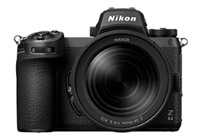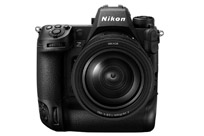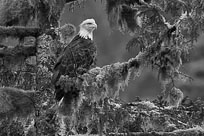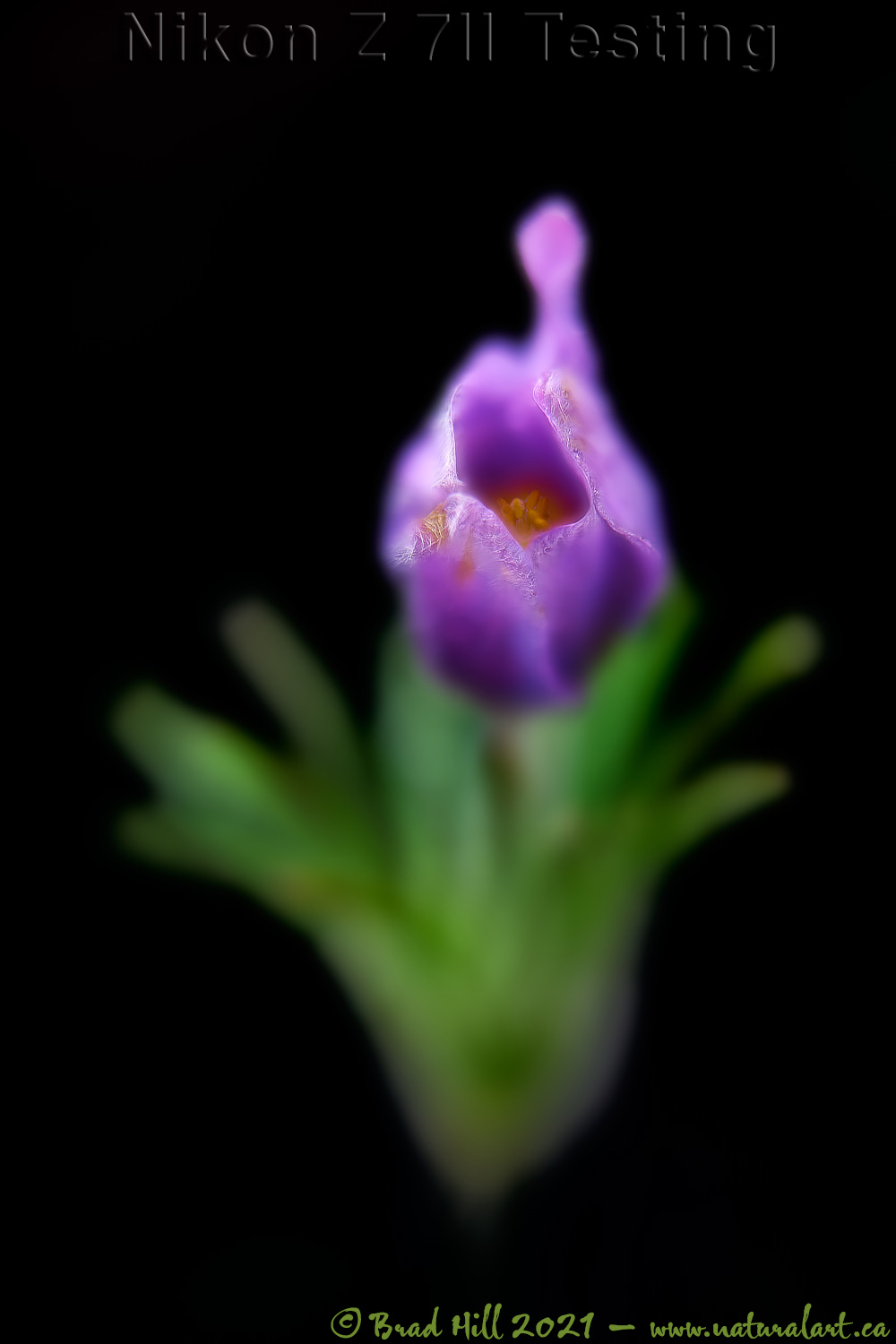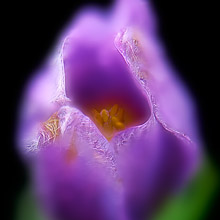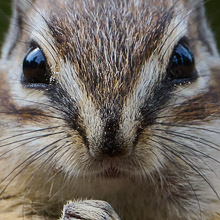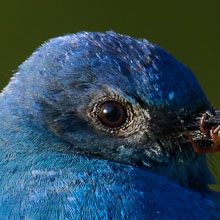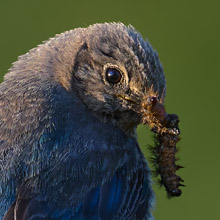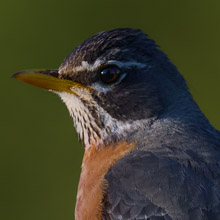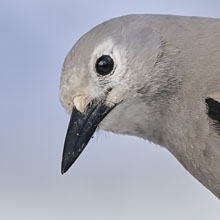Availability: Undetermined - Enquiries?
In the Field
Z 7II Testing - Prairie Crocus - From a Bee's Eye View! Findlay Creek Region (East Kootenays), British Columbia, Canada. April 11, 2021.
While I am primarily a wildlife photographer, I do like goofing around with other "genres" of nature photography, including macro work. And by saying "goofing around" I mean no disrespect to macro photography or macro photographers - it's a reference to my own limited abilities and knowledge of the genre. My own taste in macro photography tends towards images with ultra-thin DoF's and if I could design my "ideal" macro lens it would be something like a 135mm f1.8 or f2. But I'll probably be holding my breath for a LONG time before we have a Z-mount lens even resembling that ideal lens!
So...what's a mirrorless Nikon shooter to do while waiting for Nikon to offer Z-mount micro/macro lenses? Well...there are two obvious solutions. The first is to simply adapt (using the FTZ mount adapter) an F-mount macro lens. I have two of those - the AF-S Micro-Nikkor 105mm f2.8G VR and the very old (but still pretty darned good) AF Micro-Nikkor 200mm f4D.
But...I am already spoiled by the optics and IBIS of the native Z-mount lenses and decided to go back to something I last used so long ago it seems like during another lifetime - extension tubes! For reasons I can't fully understand, Nikon quit producing and selling their own extension tubes years ago (it may be something as simple as wanting to sell more macro/micro lenses, and if you give folks a lower cost option to "go macro" than buying a macro lens they'll go for it!). Anyway...recently Kenko started producing and selling extension tubes for the Z-mount and their kit consists of a 10mm extension tube and a 16mm extension tube than can, of course, be stacked. So you end up with 3 possible combinations - a 10mm, a 16mm, and a 26mm extension. And for those that don't know, all extension tubes are are "spacers" that fit between your camera's body and lens and allow it to focus closer than the lens could if it was shot without the "spacer" in place. And the larger the spacer the closer the lens can focus. Simple as pie - right?
The Japanese-made Kenko extension tubes have all the necessary contacts to give you full AF capabilities and - best I can tell - full IBIS capabilities. This image was captured with the excellent Nikkor 85mm f1.8S with both extension tubes combined - so an extension of 26mm. The 85mm f1.8S is a top-notch 85mm lens and while I haven't done extensive testing of the lens yet, I've done enough to say that it clearly beats both the F-mount 85mm lenses (both the f1.4 and the f1.8) optically...and in the field it goes toe-to-toe with the top-rated 85mm on the market - the Sigma Art 85mm f1.4 (and if you don't believe me, check out how the two lenses stack up according to dxomark.com - view that comparison here).
This image? Shot at f1.8...thus the uber-thin DoF. And what you're seeing is a composite of two images - one focused on the outer edges of the petals and one focused on the yellow anthers in the interior of the crocus. I did play with both AF and manual focus (with focus peaking) when shooting the crocus...and while the two images I used for this shot just happened to be ones where I was using AF, I suspect most users will find manual focusing more to their liking when using the extension tubes. Oh...and BTW...the background isn't the result of a massive adjustment in post-processing (just a small one!) - the flower was sitting right in front of a charred log from a forest fire way back in '85.
Anyway...because the extension tubes are inexpensive relative to the price of a macro lens...and given how light and easy they are to carry around...I think a lot of Z-series shooters may enjoy using them. In the hands of someone more experienced and practiced (and competent!) than me at macro photography could certainly produce some impressive images with them! ;-)
Here's a much larger version (4800 pixel) of this "stylized" Praire Crocus:
• Prairie Crocus - From a Bee's Eye View! Download 4800 pixel image (JPEG: 1.48 MB)
ADDITIONAL NOTES:
1. This image - in all resolutions - is protected by copyright. I'm fine with personal uses of them (including use as desktop backgrounds or screensavers on your own computer), but unauthorized commercial use of the image is prohibited by law. Thanks in advance for respecting my copyright!
2. Alert - Digitally Manipulated Image: This image clearly crosses the line from simple digital correction to digital manipulation. The soft, dream-like image you are viewing is partially the product of digital manipulation. For details on how this image was produced, see Bio: Techniques (I refer to this technique as the "Wildflower Effect"). On this image I modified the "Wildflower Effect" somewhat by incorporating a focus stack prior to applying the effect.
Behind the Camera
Z 7II Testing - Prairie Crocus - From a Bee's Eye View! Findlay Creek Region (East Kootenays), British Columbia, Canada. April 11, 2021.
Compressed RAW (NEF) 14-bit format; ISO 64.
Nikon Z 7II paired with Nikkor 85mm f1.8S plus Kenko DG Extension Tube (26mm). Supported on Gitzo GT2541EX tripod with AcraTech GXP bullhead. Shutter triggered with Nikon MC-DC2 cable release. VR on and in Sport mode. Single Pinpoint Area AF area mode.
1/125s @ f1.8; -0.67 stop compensation from matrix-metered exposure setting.
At the Computer
Z 7II Testing - Prairie Crocus - From a Bee's Eye View! Findlay Creek Region (East Kootenays), British Columbia, Canada. April 11, 2021.
RAW Conversion to 16-bit PSD file (and JPEG files for web use), including all global and selective adjustments, using Phase One's Capture One Pro 21. Global adjustments on this image were limited to tweaks to brightness, saturation, and highlights. Selective local adjustments performed using Capture One Pro's layers and masking tools. In this case selective adjustments were made on 3 separate layers and included one or more tweaks to clarity, shadows, and sharpness.
Photoshop used to blend two versions of the image with different focus points (i.e., a focus stack), apply the modified "Wildflower Effect" and for insertion of the watermark.
Conservation
Z 7II Testing - Prairie Crocus - From a Bee's Eye View! Findlay Creek Region (East Kootenays), British Columbia, Canada. April 11, 2021.
Species Status in Canada*: This species is not designated as at risk.
Prairie Crocus (Pulsatilla patens), which is also known as Pasqueflower, is a seasonally early blooming species with a very wide geographic distribution in North America - it stretches from Alaska in the north to New Mexico in the south. While it is widespread and reasonably common in the mountains, it is most abundant on the plains. In fact, dense stands of Prairie Crocus can be indicative of overgrazing. The Prairie Crocus is the floral emblem of both Manitoba and South Dakota.
This Prairie Crocus was photographed in the Columbia Valley of the East Kootenays. While this species is currently not considered at any risk itself, many ecosystems within the Columbia Valley face development pressure, including pressure from logging operations. Wildsight is an effective conservation organization that protects biodiversity and promotes sustainable communities in Canada's Columbia and Rocky Mountains. Support for Wildsight, through donation or becoming a member, will help ensure that they remain effective in their efforts to conserve threatened or endangered species and ecosystems.
*as determined by COSEWIC: The Committee on the Status of Endangered Wildlife in Canada







